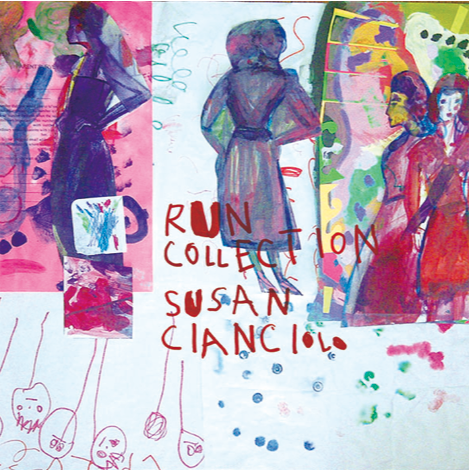IN MANY WAYS SUSAN Cianciolo’s work evades a formal category. For the most part she is a designer, but also maker, artist, director, among other roles that allow her to create her exhibitions and performances. Her body of work is similarly multi-facetted, with the products she creates under her own name as well as her brand RUN (a label she started in 1995 and has recently revived) consisting of anything from clothing, to tapestries and drink coasters. Each item is part of a whole experience in which clothes, and the way we use and wear them, have a critical role. Her clothes and products which are typically hand-made and finished in Cianciolo’s New York studio, have appeared in exhibitions, retail spaces and pop up restaurant projects across the world. Cianciolo’s work draws on the sensation of wearing, for instance her pop up restaurant creates a dining experience by curating every aspect from food and interiors to the garments worn by the service staff.
From a formal fashion education, to an informal art education, Cianciolo’s practice spans two decades and resides in both of these contexts. Her performances and exhibitions during the Nineties with figures like Bernadette Van-Huy and Rita Ackermann inform a body of work that subverts fashion, though not always overtly so. This living archive is crucial to Cianciolo’s practice, and she constantly draws from her past output, repurposing clothes into new projects and in the process reminding us that fashion can be a continuum – an ongoing process that doesn’t necessarily forget itself with the rigour that mainstream fashion sometime suggests.
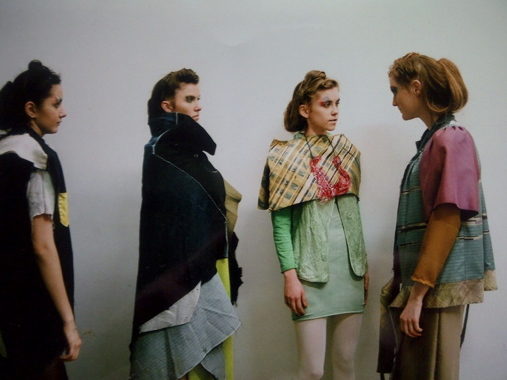
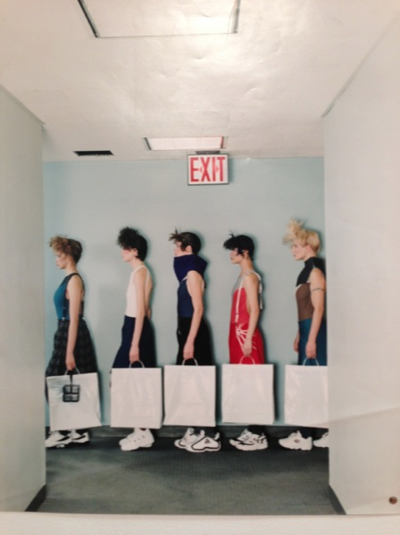
Laura: Could you explain your practice as a fashion designer and talk us through how you put a collection together?
Susan: This is actually a question I am always asking myself since I don’t create a collection in the formal sense, even though it’s a body of work that includes clothing. For example, in a few days I’m leaving for Mississippi for a show at Yalo Studio, this is a gallery in a community steeped in the tradition of quilting and textiles. The reason I took this residency, brought about by the Pine Hurst Artist Residency, is because I like going to different locations where I merge with a new environment. So what I’m doing right now is preparing a collection of clothing or products for the project. I decided for the project to go into my archives and add pieces from it, for example I’m using these body suits from a performance I did at MMK in Frankfurt. I am always looking through my archive and pattern library and pulling things out to recreate them in a new context.
Laura: So it’s part of an ongoing process…
Susan: The clothing is one part of these projects, they might also involve a performance, drawings, film or animation. It is just one of the mediums in my work. I don’t sit down and plan for a season. It all depends on what the exhibition or project is and I make specific pieces for each context. After that private clients come to me, or friends like the retailer Maryam Nassir Zadeh, who sells my work in her shop. But all this happens after, and it’s not something I plan for.
Laura: When you say ‘performance’, what exactly does this mean in the context of your work? Are we talking about a traditional runway presentation?
Susan: It can be anything really, in the last performance I did for an exhibition at Mito Contemporary Art Center (which was later shown at MIMOCA) in Japan I cast girls that worked in local galleries and museums and customised my garments to them. I’ve also worked on projects with a pop up restaurant that travels to various private homes, and for this I create a dining experience for the visitors. We dress the staff in costumes that we’ve made, so it’s a visual performance as well as an experience through the food, and then there’s the music and all the details of the event. Every aspect is hand-made and connected to the experience.
Laura: So it’s almost the reverse of the way traditional fashion works in that, instead of putting clothing on a pedestal or catwalk, you’re bringing it back into a more intimate context.
Susan: I’m creating an experience or sensation with the clothes, it’s important to me that the presentation of the products is as natural as the process, to show that all the aspects are equal and accessible. Most of the garments and homewares are completely made by hand, so it’s a very tailored and labour intensive process. I also try to re-use my archive of works and keep adding or adapting past designs but we also keep making new pieces.
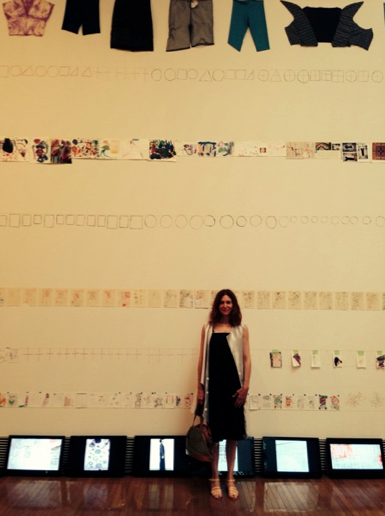
Laura: How is your studio structured? Do you have a production team?
Susan: It changes, but right now there are three people in the studio, which is quite a big team for me. I stopped doing production some years ago because I needed such a big team to do it in-house. At the moment I’m collaborating with Kiva Motnyk in Soho and we’re recreating RUN Home collection, which is something we began in the Nineties, so we have a team at her studio and I have a team here at my studio developing the collection, and it goes back and forth.
Laura: What’s the thinking behind revisiting a past RUN collection into your current way of working?
Susan: I’m always going back into my archive and using original pieces from RUN in new projects, so there’s never a sense of new or old for me. And Kiva and I have been working together for so long there was a real understanding of how we could do something similar in a new context: this collaboration was born from that complicity.
Laura: How does the collection work?
Susan: RUN Home is a collection for the home, and comes out of RUN, the label I originally worked with when I started out making clothes. The collection is made up of all kinds of products for the interior, from bedding to drink coasters. What I’m doing now is making clothes that work with the Home collection, for example a hand-made pillow set comes with a kimono to wear. I’m taking a holistic approach; it’s continuum of my work with one-of-a-kind pieces. We’re also collaborating with other people: artists and clothing designers like Jessica Ogden and Zoe Latta, Hans Gillickson, who is making furniture, and we have ceramics made by Jasiu Krajewski. So we spend a lot of time seeking out collaborators. But the wearable aspect, like the kimonos, reflects what you would wear if you were in your home, so it is an imagining of what a home space would look like.
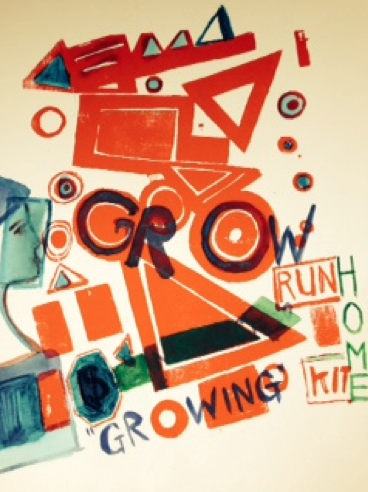
Laura: How do you exercise control over an aesthetic when you collaborate in this way?
Susan: Well we approach like-minded artisans so that our aesthetics join together. With Kiva, since we’ve worked together for so long, we already have an understanding of an aesthetic for the collection, so we know if it works or if it doesn’t. We share a common language.
Laura: In light of the topic of ‘slowness’, the theme for the next print issue of Vestoj, is sustainability a conscious aspect of you work?
Susan: A lot of people ask me this and it isn’t something I sought out, but it’s always existed in my way of working. As ‘sustainability’ became really popular, I got brought into the conversation, but it’s not something I do consciously. I’m not waving the flag of the eco-friendly designer; I feel it’s much broader than that. Most of my textiles are either organic or vintage, and I’m constantly repurposing in my studio, so sustainability just happens naturally.
Laura: In terms of your artistic approach and philosophy, I wondered how you see clothes and their role in our everyday lives? How do you hope that your garments are used and worn?
Susan: I don’t have any expectation actually, but I would say that I feel a lot of love towards the clients who buy my garments. It’s a very intimate relationship between a designer and a wearer. For a personal client, the pieces are custom-made or they’ve bought pieces for so many years that we have a really close relationship. These clients understand my clothes so deeply, and the amount of sewing that goes into the pieces as well as the level of care. I never project how I want a piece of clothing to be worn, they’re free to do what they want with them.
Laura: Since your process is so personal, I wonder if there are particular aspects of the fashion industry that you react to, or are trying to subvert? Your earlier work was more overtly subversive, how does that compare to how you work now?
Susan: Earlier I was really trying to be subversive. I was trying to make a point and it was my goal to be as subversive as I could possibly be; I guess I did a good job. But now I realise that I don’t have to try so hard, it just comes naturally by working in a different way to the mainstream. I don’t think there is even the slightest bit of me needing to rebel anymore, it’s more about accepting that my work will always stand out as different to the fashion industry.
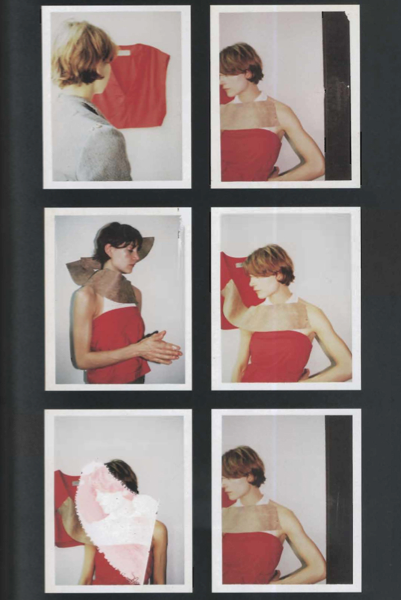
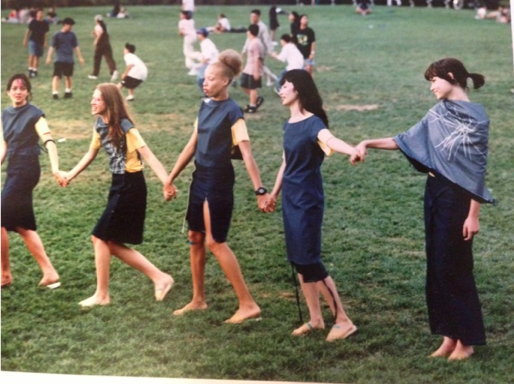
Laura: Could you discuss your earlier work, with artists like Rita Ackermann and Bernadette Corporation, a bit further? Were you exploring specific ideas at this time and do they still come into your work?
Susan: When I remember those first presentations, for me that was the beginning of making a show. What set it apart was very subtle. For example, for the first show I did at the Andrea Rosen Gallery on Spring Street in New York, I put tape on the floor to mark the runway for the models, which at that time seemed so different, but it was just all I had to offer. The first model had a switch-blade that she flipped while she was on the runway, an action that echoed the aesthetic of the clothes. Bernadette Van-Huy (of the art collective Bernadette Corporation) had sliced the tank tops off the shoulder. We also had cheap wigs for the hairstyles and I was really experimenting with styling, so the subversion came out of our resourcefulness and experimentation.
The second show we did was in an abandoned parking garage. A friend drove around and picked up these wooden planks used for shipping crates which we covered in brown paper and used as the runway. I also had the makeup artist do really heavy makeup, so the models looked ugly and sickly in a way. So like the first show, it was very raw and through these aspects, it became a subversive statement.
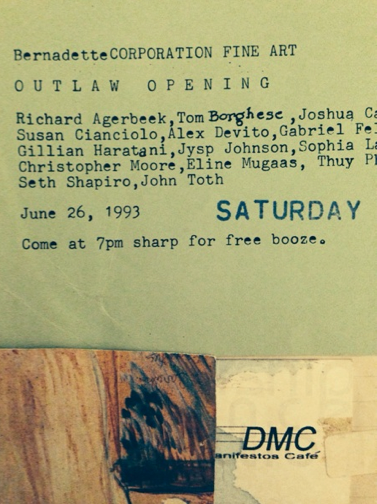
For the third show, I presented a film, ‘Pro Abortion Anti-Pink’ which collaborated with different photographers who had never made films before, like Terry Richardson, Annette Aurell, Chris Moor, Cheryl Dunn, Marcelo Krasilcic, Tobin Yelland and myself and we each made a vignette. During the fashion show, the band No Neck Blues played and it was so loud that it was quite bothersome to the audience. It was always one thing after another, and it wasn’t about money, it was just ideas and experiments. I think all this work came about from not having any resources, just your brain and your creativity!
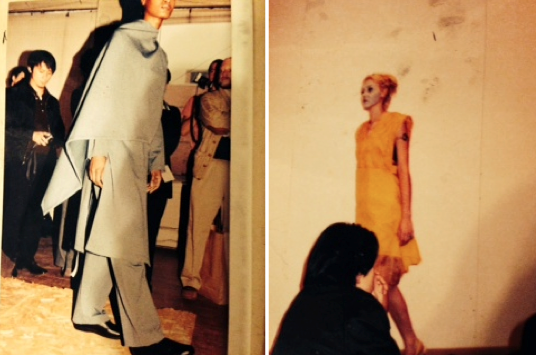
Laura: Were you trying to work more in an art context? Or was it a fashion vernacular you were working with?
Susan: Well I didn’t have a strategy back then, but now there’s a lot of planning in the way that I work. At the time I was married to Aaron Rose who owned Alleged Gallery, so half of my existence was in the art world. I think I was making art, but not intentionally. So many interviewers would ask me ‘is it art or fashion’? Having to decide which to align with felt very stressful at the time because back then no one was doing both. But eventually I just thought why not, and why couldn’t I?
Laura Gardner is a writer in Melbourne.
